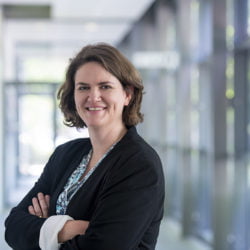As well as helping industry clients to solve materials failure problems, nC2 is proud to help make the world a safer place through our support of air, rail and marine accident investigations. A trusted source of expertise, we work with all the UK government’s transport accident investigation agencies – the Air Accidents Investigation Branch (AAIB), Marine Accident Investigation Branch (MAIB) and Rail Accident Investigation Branch (RAIB).
Our unique combination of knowledge and experience in both materials science and accident investigation, as well as access to the University’s state-of-the-art testing facilities, puts us in a unique position to contribute to this safety-critical work.
Specialist accident investigation skills
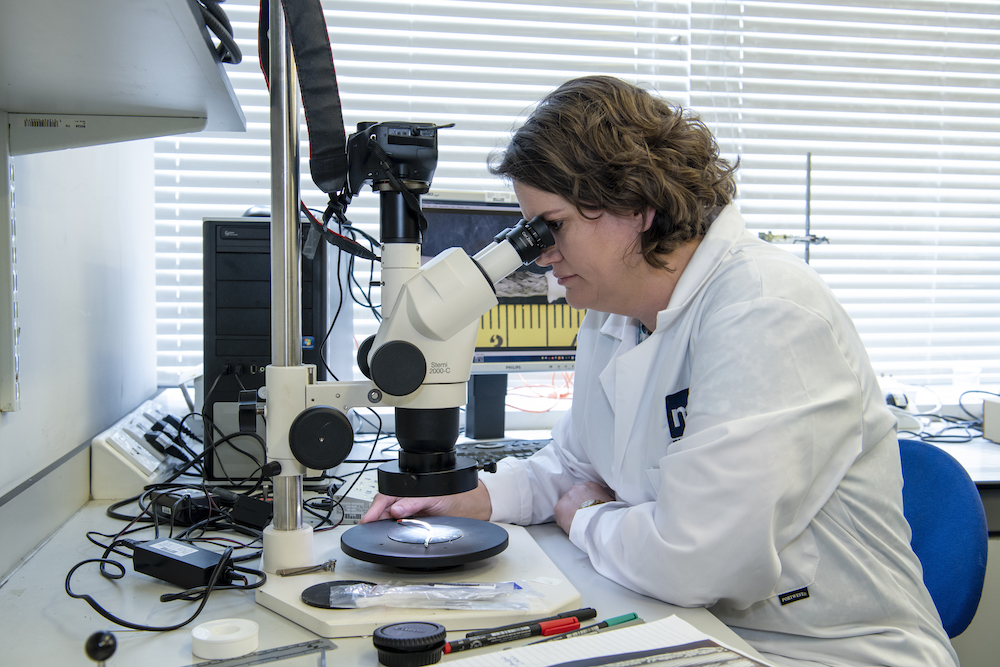
Dr Nicola Symonds examining failed components
This aspect of our work is led by nC2 Director Professor Nicola Symonds, an internationally recognised expert in the field of forensic materials engineering who draws on 20 years’ experience of accident investigation. Having studied aerospace engineering at degree level and completed a PhD in materials science, she spent 10 years with the Ministry of Defence (MOD) as a forensic materials engineer, supporting the Army, Royal Navy and Royal Air Force, and on its establishment, the Military Air Accident Investigation Branch. During this time her sole focus was the investigation of military incidents and accidents.
At the MOD, and later at nC2, Nicola has worked on over 100 incidents involving helicopters, military jets, hot air balloons, commercial and military passenger aircraft, tanks and guns, as well as ship impellers and engines. With nC2 she has also undertaken rail engineering research for the Department for Transport and is involved in our longstanding programme of research into train bearing and axle fatigue monitoring.
A longstanding member of the global forensic engineering community, throughout her career Nicola has presented at and chaired at the International Conference on Engineering Failure and is published in Engineering Failure Analysis and other specialist journals.
“At the MOD I built up a breadth of knowledge that continues to grow as nC2 takes on more failure and accident investigation work,” says Nicola. “My career has given me a unique skill set – knowledge of how materials break, an understanding of how a range of different vehicles work, and how to establish the chain of events that led to an accident.”
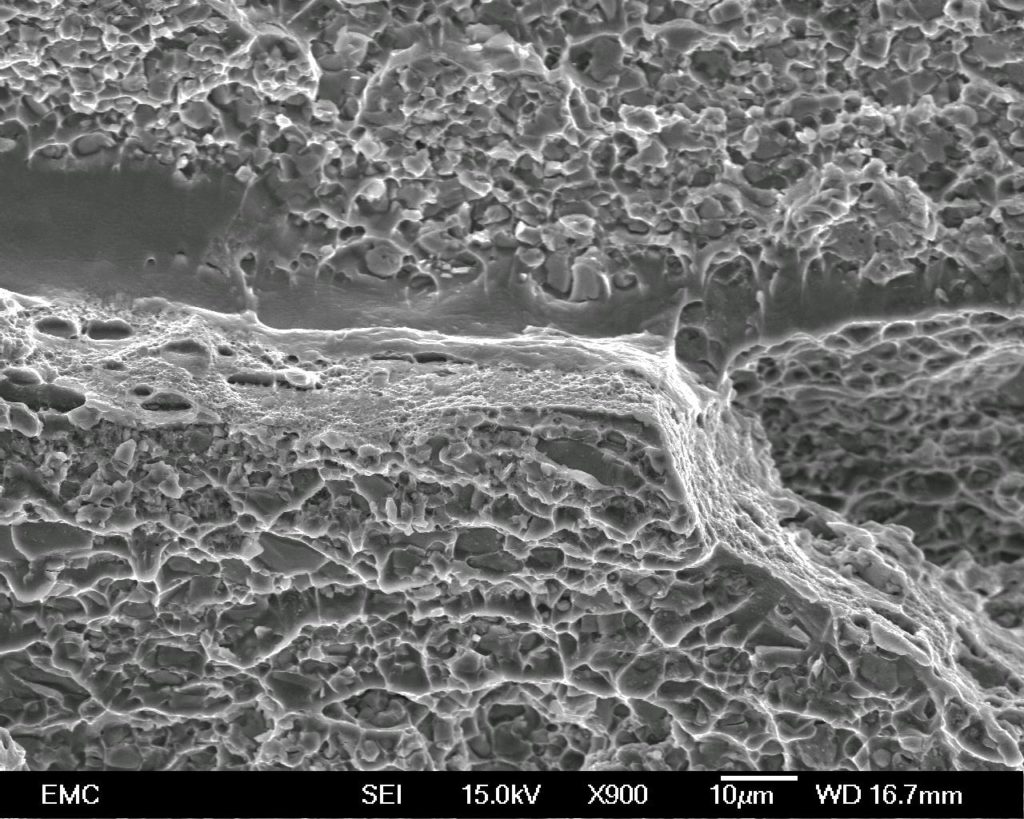
SEM high magnification view of an overload fracture surface
A vehicle part will fail either because it wasn’t made to the right specification, or because it was loaded in an unanticipated way. As with industrial failure problems, our role at nC2 is to determine the underlying cause; however, accident investigations bring additional challenges. In an industry setting a problem is likely to be spotted as it happens and will therefore cause less secondary damage, whereas on a crash site the cause of the failure can be much more difficult to unravel.
Nicola explains: “If there was a component that was coming loose or wearing out over time, its fracture surface will look different from the surface you’d see when something breaks at high impact. It’s about using fractography to pick out from all the damage the one bit of damage that’s different.”
Nicola’s accident-specific expertise also enables her to look out for clues that will help investigators piece together the bigger picture. “When an aircraft crashes, for example, the lights on the control panel will fail in a certain way, so it’s possible to work backwards and find out which lights were on when the plane crashed,” she explains. “Or if an aircraft hit the ground while the engine was running it will have churned up the earth and there will be dirt in the engine. If the engine is free of dirt, it’s likely that it stopped mid-air.”
Tapping into the team’s expertise
While Nicola’s experience underpins our accident investigation work, the skills and support of the wider team are critical to its successful completion.
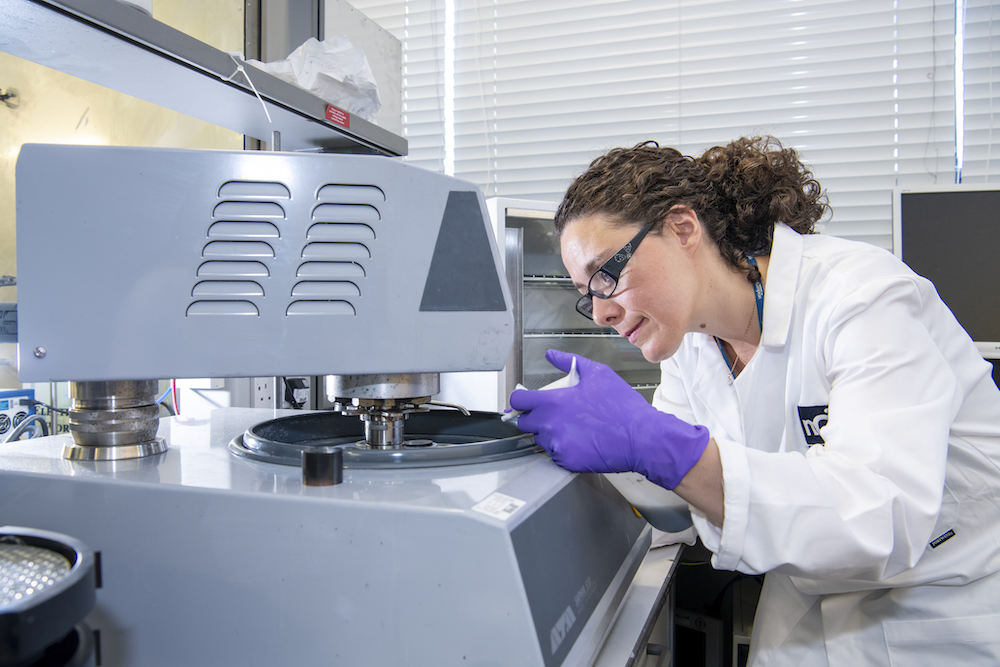
Dr Ilaria Corni preparing cross-sections for inspection
Principal Consultant Dr Ilaria Corni has been supporting our investigation work for the last five years, leading on much of the initial materials characterisation. She explains: “After Nicola looks at a fracture surface I will do the microscopy and imaging and undertake confirmation checks, which establish whether the component is made of the right materials and is geometrically correct.” A skilled project manager, Ilaria also ensures that the schedule of work runs smoothly, that samples are with the right people at the right time, and that the client receives regular updates.
Senior Engineering Technician Sam Hambrook also plays an essential support role, carrying out sample preparation and photography. Rachel Triggs, Corrosion Control Consultant, undertakes characterisation work, as well as fractography in her specialist field of environmental degradation, bringing a wealth of experience in this field from a previous role at the MOD. In addition, Nicola can call on the specific expertise of other team members as needed, depending on the nature of the investigation.
“Across the team we have the skills and knowledge to recognise and understand all the main failure mechanisms that materials go through,” says Nicola. “All of the day-to-day work we do – such as examining materials after doing wear or erosion tests – gives us knowledge that we can bring to investigations, enabling us to quickly identify a wear scar or a fatigue crack, for example.”
Cutting-edge testing and analysis facilities
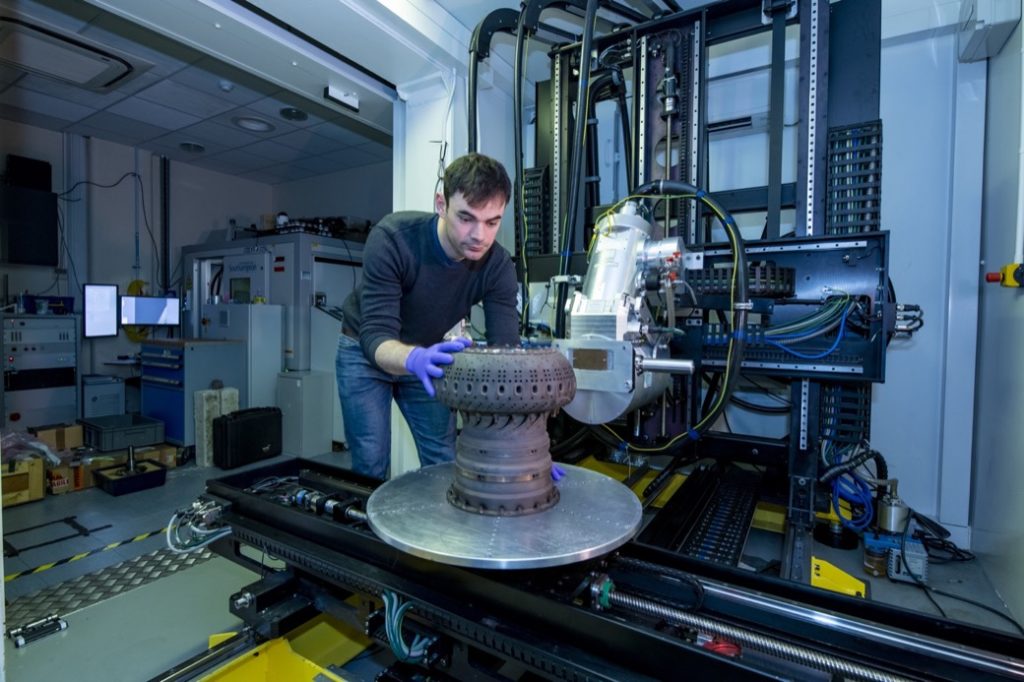
Nick Hale of MuVis setting up component to scan with CT
Being a University-based consultancy means we have access to a wide range of cutting-edge equipment and expertise to support our investigation work. The µ-VIS X-Ray Imaging Centre (part of the UK’s National Research Facility for X-CT) is a particularly important university resource; its state-of-the-art high-resolution computed tomography (CT) facilities enable us to see inside vehicle parts without taking them apart or cutting into them.
In addition, our network of University contacts means we can access whatever equipment we might need for a specific investigation, from scanning electron microscopes and chemistry characterisation and analytics facilities through to furnaces, which can help us map the progression of a fire.
Our location in Southampton is also an advantage – the MAIB is also based in Southampton, and the AAIB is in nearby Farnborough, where RAIB also has a branch.
Life-saving impact
In recent years we have undertaken projects for all the Department for Transport’s investigation bodies – the AAIB, MAIB and RAIB. Understandably, we have to maintain confidentiality around ongoing projects, but past investigations that are now in the public domain demonstrate how our input has helped to prevent future accidents.
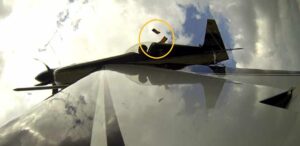
The moment an aileron detached from a plane mid-flight – the subject of an AAIB investigation supported by nC²
Nicola supported the AAIB’s investigation into the fatal helicopter accident at Leicester football stadium in 2018. Her findings, detailed within the report published in 2023, helped AAIB to understand the degradation stages and lock-up of the tail rotor hybrid bearing which was a crucial stage of the failure sequence. The work was completed over several years as additional evidence of other helicopters at risk became apparent.
Another AAIB investigation concerned an emergency landing at Belfast Airport without front landing gear, with 60 crew and passengers on board. Our work identified damage to the electrical harness resulting from a cyclically-driven fatigue failure mechanism. This led to the flight operator undertaking remedial action on its entire Dash 8 Q400 fleet.
We also supported AAIB in the case of an aileron (wing flap) cable failure on a passenger flight from Newquay to London, for which we examined lengths of the failed right-side cable and associated mechanism and compared it with the equivalent on the plane’s left side and a new cable system. We were also integral to the investigation of an incident involving a failed aileron hinge, in which the aileron bent up and then detached from the plane mid-flight, identifying fatigue cracks as the cause of the failure and that the cracks had multiple origins and were not due to a material feature or flaw. Nicola now uses this investigation as a case study in her guest lectures. Both of these investigations have resulted in recommendations and actions to enhance safety, including improved maintenance of aileron cables and regular detailed inspections of particular types of aileron hinge.
An investigation for MAIB concerned the catastrophic keel failure and subsequent capsize of the yacht Tyger. Luckily, the proximity of another yacht and the fact that the passengers and crew were wearing life jackets meant there was no loss of life on this occasion, but a very similar keel failure on another yacht sadly resulted in the loss of four crew. Our analysis, undertaken with the University’s Wolfson Unit for Marine Technology and Industrial Aerodynamics, highlighted manufacturing issues with the keel, leading to several actions to avoid a similar scenario. These included contacting owners of craft with a similar keel to highlight the issue, the release of new guidance on keel inspection, and a requirement for manufacturers to provide relevant information in owner’s manuals.
We provided specialist support to RAIB during their investigation into the cause of the brake failure and near-derailment of a train carrying hazardous chemicals. The investigation report was published in early 2023, concluding that low railhead adhesion had caused the wheelset to lock up and develop wheel flats. The resulting recommendations aim to ensure that the processes and standards to control the risks associated with very low levels of wheel/rail adhesion are reviewed and followed.
Understanding rigorous investigation processes
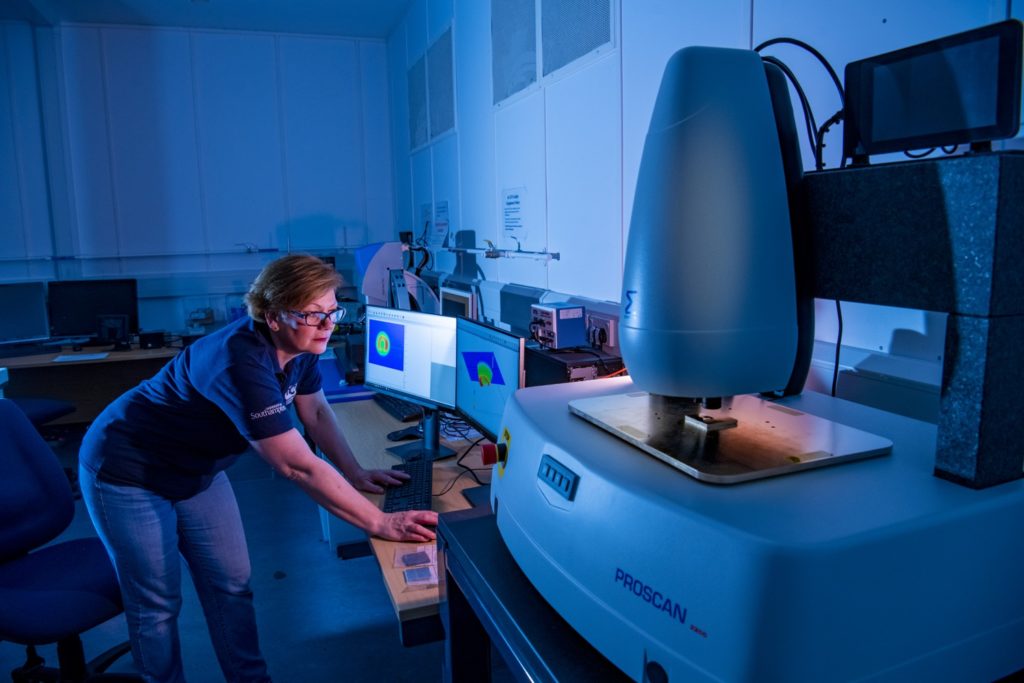
Sam Hambrook detmining surface profile of a damaged surface
Our experience of accident investigations means we understand the rigorous processes and requirements they involve. For example, there are strict rules for evidence tracking, and our staff may be required to carry out their work while being witnessed by other stakeholders with an interest in the investigation. We also appreciate the need for a ‘belt and braces’ approach to the testing and analysis itself.
“For investigation work we start with non-destructive tests, because as soon as you start cutting into or changing a sample you can’t go back – and if you spoil it nobody else will be able to look at it,” Nicola explains. “We also do a lot more photography and recording than we would in an ordinary project to make sure we don’t miss something that becomes relevant later on in the investigation.”
Nicola also has extensive experience of writing investigation reports, where it is essential to present the facts clearly and comprehensively while taking care to separate fact from expert opinion.
Challenges and rewards
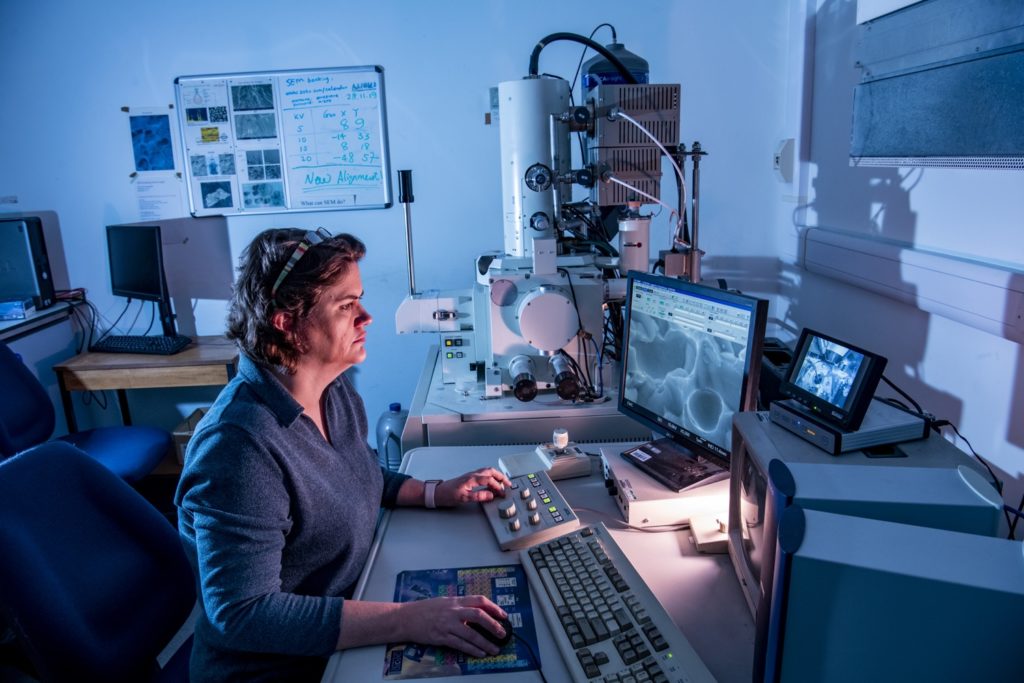
Dr Nicola Symonds performing fractography at high magnifcation using a SEM
Accident investigation work can be tough, both practically and emotionally. It can mean working long hours outside of normal work times, and our staff have to get up close to the often distressing details of what happened.
“It’s hard work and can be challenging, but we do it because we want to give back,” Nicola says. “I find it the most rewarding part of all the work we do, because my contribution means that in future people won’t have to go through what others have gone through. We are saving lives – that’s not something many engineers can say.”
